In the competitive SUV segment, the Opel Grandland and Renault Symbioz have emerged as formidable contenders for consumers seeking functionality, efficiency, and innovation. As we delve into their technical specifications and features, it becomes evident that both vehicles have unique traits that cater to different preferences. Let’s explore how these two models stack up against each other.
Vauxhall Grandland vs Renault Symbioz – Which model is better for everyday use?
Both models have their strengths – but which one suits you more?
Compare performance, efficiency, price and space directly: Vauxhall Grandland or Renault Symbioz?
Design and Dimensions
The Opel Grandland presents a dynamic and robust exterior that measures an imposing 4650 mm in length. Its significant width of 1934 mm and height of 1665 mm contribute to a commanding presence on the road. In contrast, the Renault Symbioz is more compact, with a length of 4413 mm, a width of 1797 mm, and a height of 1575 mm. The Symbioz’s narrower profile makes it more agile, potentially enhancing maneuverability in urban settings.
Powertrain and Performance
When it comes to performance, the Opel Grandland offers a range of engine options including petrol MHEV, plug-in hybrid, and fully electric variants. The highest performance model boasts a power output of up to 213 HP, achieving acceleration from 0 to 100 km/h in just 7.8 seconds. The electric range is impressive too, with values stretching up to 585 km for the fully electric version.
On the other hand, the Renault Symbioz is powered by a full hybrid engine producing 143 HP. While it lags behind the Grandland in terms of raw power, it still offers adequate performance with a 0-100 km/h time of 10.6 seconds, paired with substantial fuel efficiency at 4.8 L/100 km. This positions the Symbioz as a great option for eco-conscious drivers who prioritize fuel economy.
Transmission and Drive
Both vehicles come equipped with automatic transmissions and front-wheel drive configurations. The Grandland’s advanced options include a dual-clutch automatic gearbox and reduction gearbox in hybrid formats, enhancing power delivery and efficiency. The Symbioz, while offering a more traditional automatic gearbox, focuses on simplicity for everyday driving.
Interior and Practicality
With seating for up to five passengers, both SUVs offer similar passenger accommodation. However, the Grandland edges out in terms of luggage space with a trunk capacity of 550 liters compared to the Symbioz’s 492 liters. The spacious interior and high-quality materials of the Grandland offer a premium experience, enhancing its appeal for family outings.
Technology and Innovations
In an age where technology plays a crucial role in consumer choice, both the Opel Grandland and Renault Symbioz come packed with modern features. The Grandland is designed with next-gen connectivity and advanced driver-assistance systems, making it suitable for tech-savvy drivers. Moreover, its fuel efficiency options push the boundaries of what's possible for hybrid and electric vehicles.
The Renault Symbioz, while aimed for eco-friendliness, incorporates innovations that emphasize sustainability without compromising comfort. The integration of hybrid technology exemplifies a commitment towards reducing emissions, as indicated by its CO2 efficiency class of C, producing 109 g/km.
Cost of Ownership
Cost-effectiveness remains a focal point for buyers. The Opel Grandland, with a fuel tank capacity of 55 liters and alternatives for every driving need—be it petrol, hybrid, or electric—aligns well with various budgets. Its diverse powertrains cater to those willing to invest in more advanced tech.
The Renault Symbioz, with smaller fuel tank and hybrid setup, also aims at providing lower running costs, appealing to budget-conscious drivers. Its lower curb weight of 1498 kg results in better efficiency, minimizing the visits to the fuel station.
Conclusion
In summary, the Opel Grandland and Renault Symbioz represent two distinct approaches to the SUV market. The Grandland is a powerhouse boasting versatility, spaciousness, and a variety of engine options, suited for families and tech enthusiasts alike. Conversely, the Renault Symbioz delivers on efficiency and eco-friendliness, marking its territory for those passionate about sustainability. Ultimately, your choice will hinge on personal preferences, lifestyle, and priorities in the rapidly evolving automotive landscape.
Here’s where it gets real: The technical differences in detail
Costs and Efficiency:
Looking at overall running costs, both models reveal some interesting differences in everyday economy.
Renault Symbioz has a clearly perceptible advantage in terms of price – it starts at 24400 £, while the Vauxhall Grandland costs 32600 £. That’s a price difference of around 8134 £.
Fuel consumption also shows a difference: Vauxhall Grandland manages with 2.60 L and is therefore significantly more efficient than the Renault Symbioz with 4.50 L. The difference is about 1.90 L per 100 km.
Engine and Performance:
Power, torque and acceleration say a lot about how a car feels on the road. This is where you see which model delivers more driving dynamics.
When it comes to engine power, the Vauxhall Grandland has a decisively edge – offering 325 HP compared to 158 HP. That’s roughly 167 HP more horsepower.
In acceleration from 0 to 100 km/h, the Vauxhall Grandland is clearly quicker – completing the sprint in 6.10 s, while the Renault Symbioz takes 9.10 s. That’s about 3 s faster.
In terms of top speed, the Vauxhall Grandland performs slightly better – reaching 220 km/h, while the Renault Symbioz tops out at 180 km/h. The difference is around 40 km/h.
There’s also a difference in torque: Vauxhall Grandland pulls convincingly stronger with 509 Nm compared to 265 Nm. That’s about 244 Nm difference.
Space and Everyday Use:
Beyond pure performance, interior space and usability matter most in daily life. This is where you see which car is more practical and versatile.
Both vehicles offer seating for 5 people.
In curb weight, Renault Symbioz is noticeable lighter – 1359 kg compared to 1675 kg. The difference is around 316 kg.
In terms of boot space, the Renault Symbioz offers minimal more room – 576 L compared to 550 L. That’s a difference of about 26 L.
In maximum load capacity, the Renault Symbioz performs barely noticeable better – up to 1682 L, which is about 37 L more than the Vauxhall Grandland.
When it comes to payload, Vauxhall Grandland minimal takes the win – 495 kg compared to 459 kg. That’s a difference of about 36 kg.
Who comes out on top?
Overall, the Vauxhall Grandland shows itself to be is largely superior and secures the title of DriveDuel Champion.
It convinces with the more balanced overall package and proves to be the more versatile choice for everyday use.
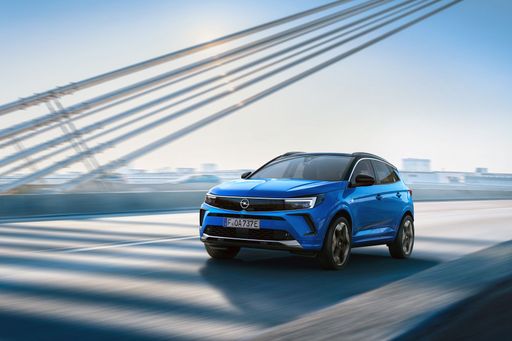 @ Opel / Stellantis Media
@ Opel / Stellantis Media
Vauxhall Grandland
Vauxhall Grandland
The Opel Grandland feels like a sensible, well-rounded SUV — neat styling, a spacious cabin and a composed ride that turns daily driving into a quietly pleasant experience. It’s a smart choice for buyers who want modern tech, good economy and a dash of German practicality without shouting for attention.
details @ Opel / Stellantis Media
@ Opel / Stellantis Media
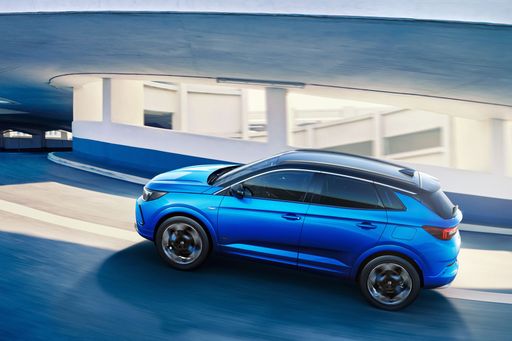 @ Opel / Stellantis Media
@ Opel / Stellantis Media
 @ Opel / Stellantis Media
@ Opel / Stellantis Media
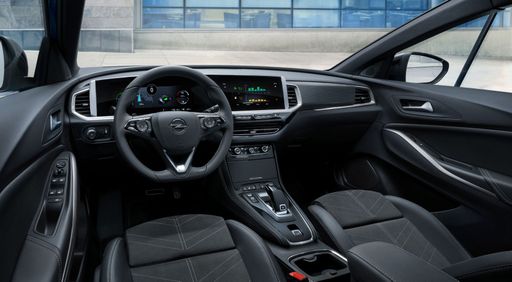 @ Opel / Stellantis Media
@ Opel / Stellantis Media
Renault Symbioz
The Renault Symbioz feels less like a traditional car and more like a rolling living room that's been told it's allowed to drive — its flowing lines and minimalist cabin are pure concept-car theatre that teases the future of everyday transport. For buyers with an eye for design and a taste for tech-forward ideas, the Symbioz is an alluring vision of what Renault could offer tomorrow, even if it's not yet a model you can park in your driveway.
details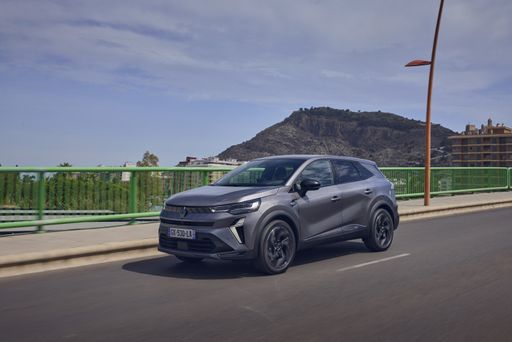 @ Renault Group Media
@ Renault Group Media
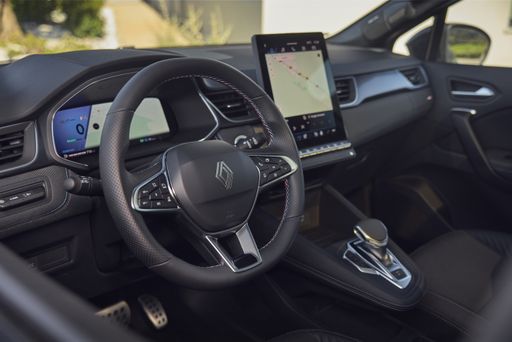 @ Renault Group Media
@ Renault Group Media
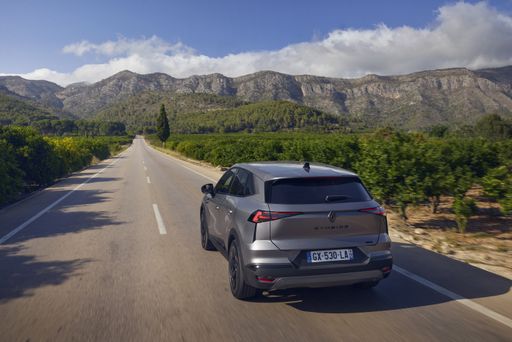 @ Renault Group Media
@ Renault Group Media
 @ Opel / Stellantis Media
@ Opel / Stellantis Media
|
 @ Renault Group Media
@ Renault Group Media
|
|
|
|
Costs and Consumption |
|
|---|---|
|
Price
32600 - 51400 £
|
Price
24400 - 30700 £
|
|
Consumption L/100km
2.6 - 5.6 L
|
Consumption L/100km
4.5 - 6 L
|
|
Consumption kWh/100km
17.8 - 18.6 kWh
|
Consumption kWh/100km
-
|
|
Electric Range
82 - 694 km
|
Electric Range
-
|
|
Battery Capacity
-
|
Battery Capacity
-
|
|
co2
0 - 126 g/km
|
co2
102 - 136 g/km
|
|
Fuel tank capacity
55 L
|
Fuel tank capacity
48 L
|
Dimensions and Body |
|
|---|---|
|
Body Type
SUV
|
Body Type
SUV
|
|
Seats
5
|
Seats
5
|
|
Doors
5
|
Doors
5
|
|
Curb weight
1675 - 2325 kg
|
Curb weight
1359 - 1544 kg
|
|
Trunk capacity
485 - 550 L
|
Trunk capacity
492 - 576 L
|
|
Length
4650 mm
|
Length
4413 mm
|
|
Width
1905 - 1934 mm
|
Width
1797 mm
|
|
Height
1665 mm
|
Height
1575 mm
|
|
Max trunk capacity
1580 - 1645 L
|
Max trunk capacity
1582 - 1682 L
|
|
Payload
425 - 495 kg
|
Payload
376 - 459 kg
|
Engine and Performance |
|
|---|---|
|
Engine Type
Electric, Petrol MHEV, Plugin Hybrid
|
Engine Type
Full Hybrid, Petrol MHEV
|
|
Transmission
Automatic
|
Transmission
Automatic, Manuel
|
|
Transmission Detail
Reduction Gearbox, Dual-Clutch Automatic
|
Transmission Detail
Automatic Gearbox, Manual Gearbox, Dual-Clutch Automatic
|
|
Drive Type
Front-Wheel Drive, All-Wheel Drive
|
Drive Type
Front-Wheel Drive
|
|
Power HP
145 - 325 HP
|
Power HP
140 - 158 HP
|
|
Acceleration 0-100km/h
6.1 - 10.2 s
|
Acceleration 0-100km/h
9.1 - 11 s
|
|
Max Speed
170 - 220 km/h
|
Max Speed
180 km/h
|
|
Torque
230 - 509 Nm
|
Torque
250 - 265 Nm
|
|
Number of Cylinders
3 - 4
|
Number of Cylinders
4
|
|
Power kW
107 - 239 kW
|
Power kW
103 - 116 kW
|
|
Engine capacity
1199 - 1598 cm3
|
Engine capacity
1332 - 1789 cm3
|
General |
|
|---|---|
|
Model Year
2024 - 2025
|
Model Year
2025
|
|
CO2 Efficiency Class
A, D, B
|
CO2 Efficiency Class
C, D, E
|
|
Brand
Vauxhall
|
Brand
Renault
|
Is the Vauxhall Grandland offered with different drivetrains?
Available configurations include Front-Wheel Drive or All-Wheel Drive.
The prices and data displayed are estimates based on German list prices and may vary by country. This information is not legally binding.
